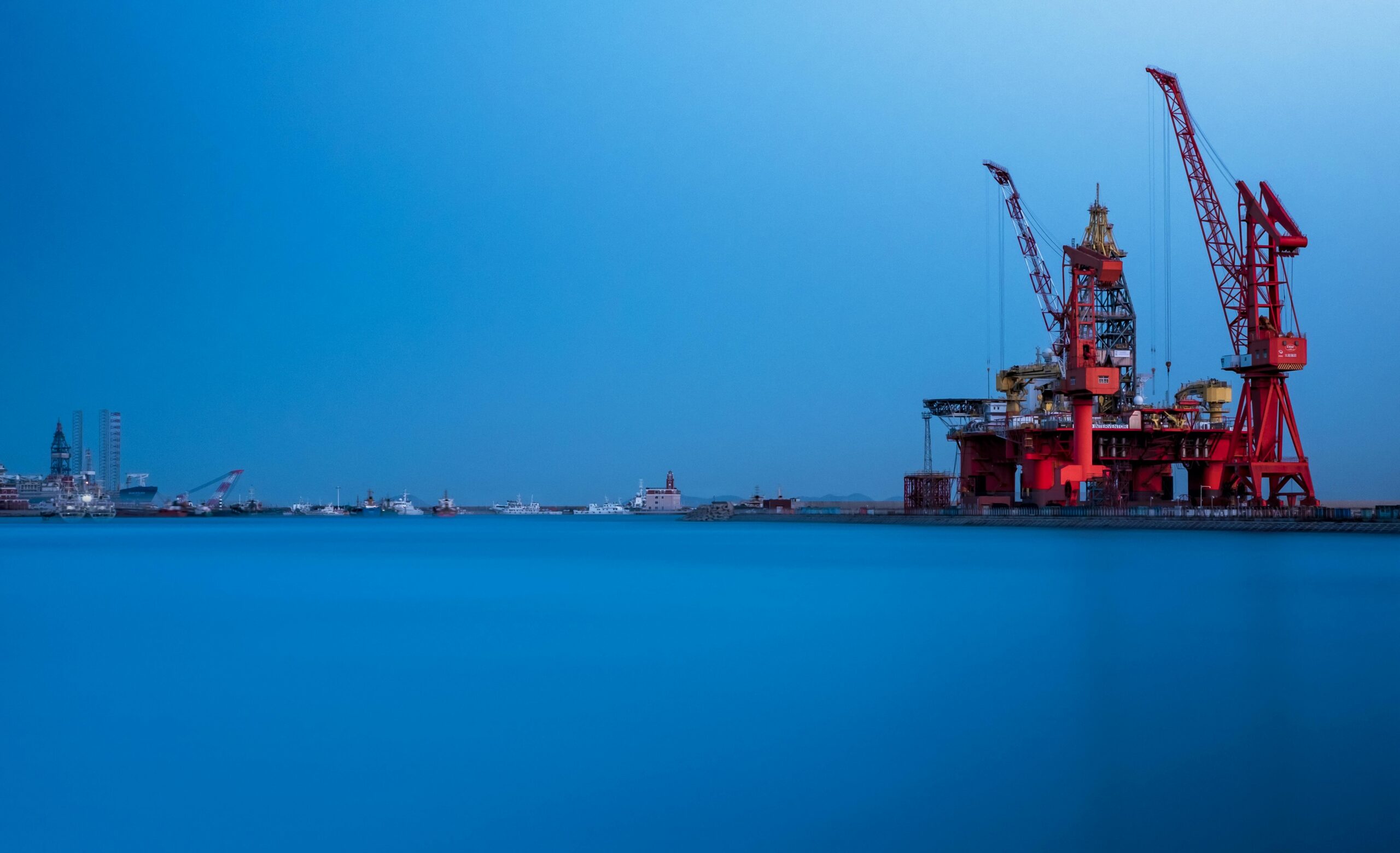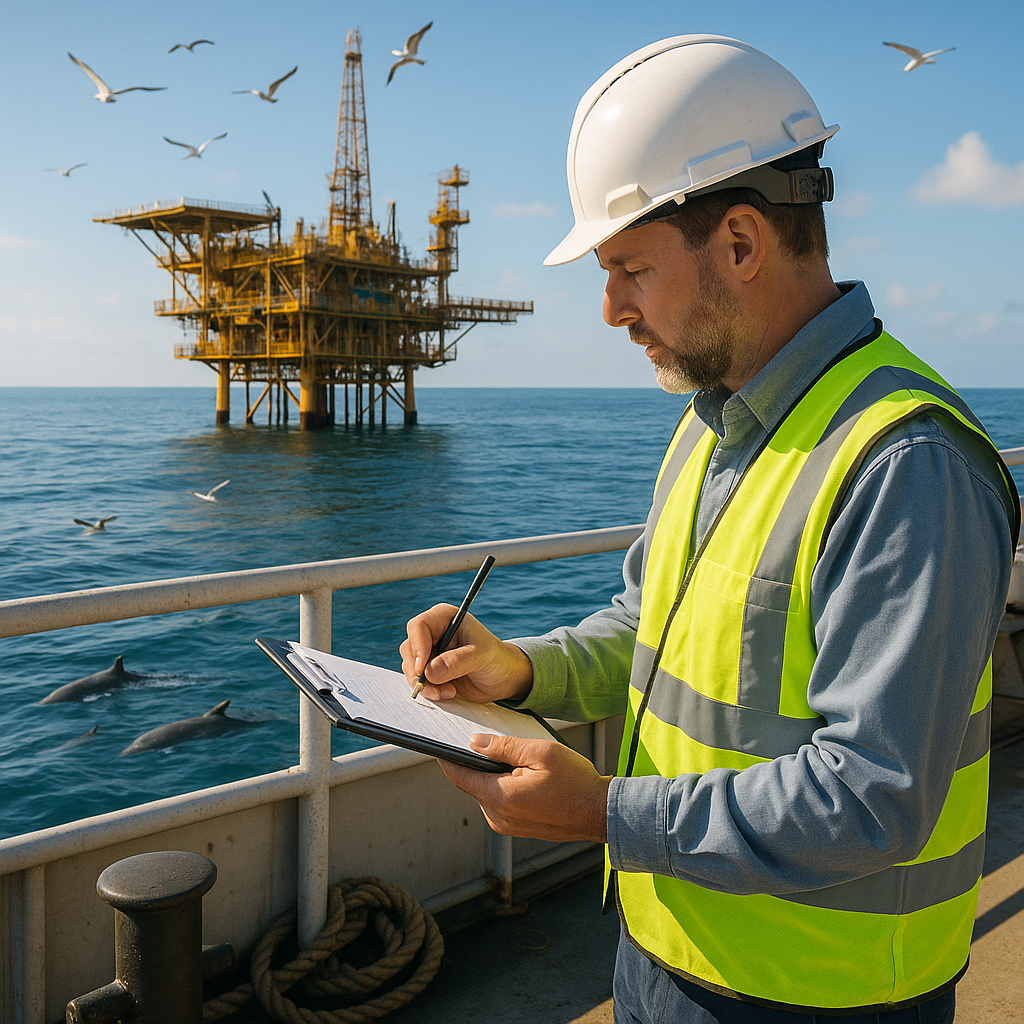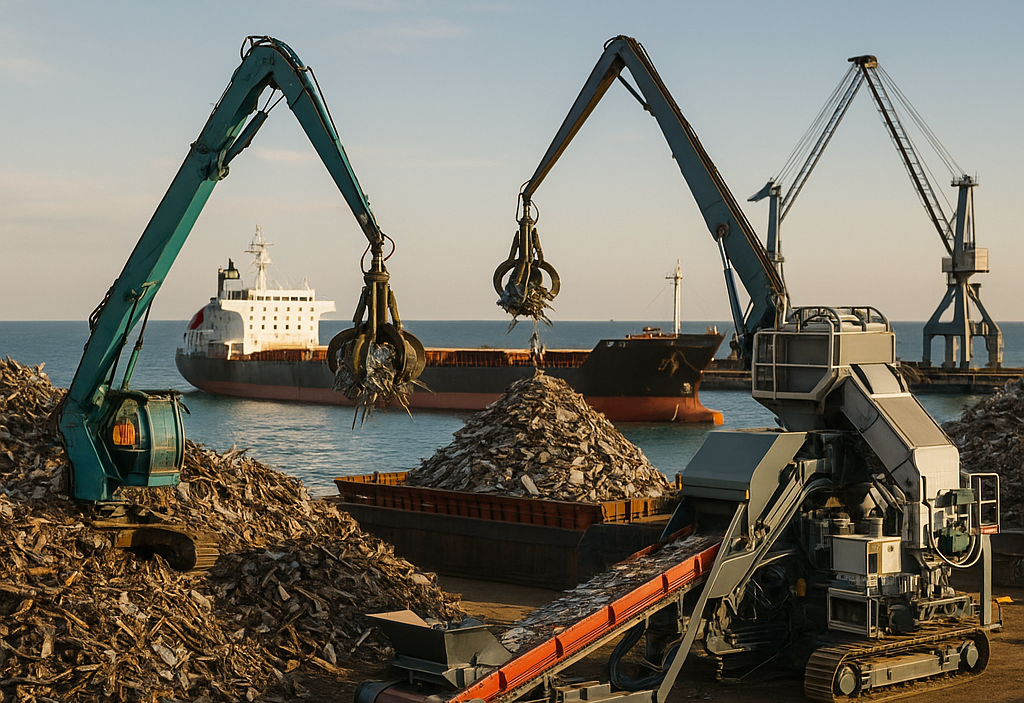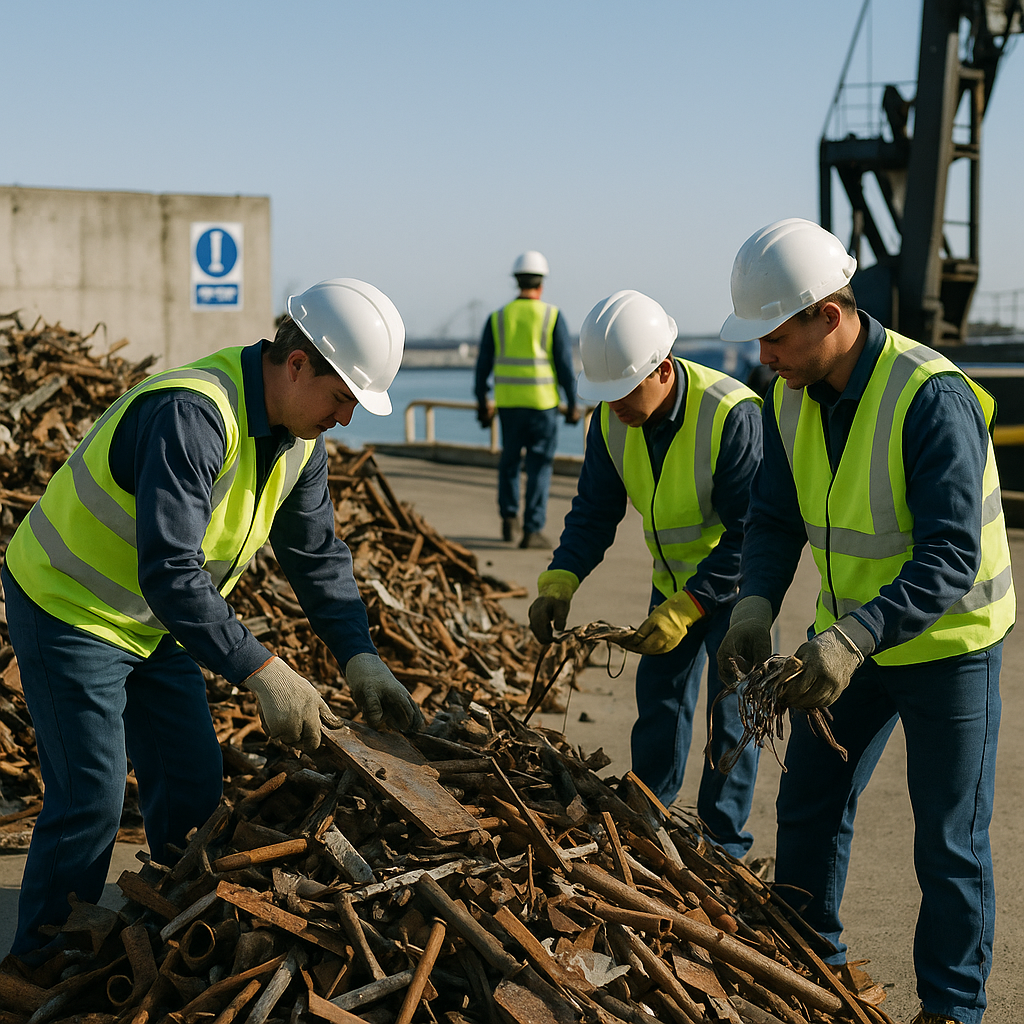5901 Botham Jean Blvd, Dallas, TX 75215
Managing Scrap Metal from Offshore Platforms in the Gulf of Mexico
August 7, 2025The Gulf of Mexico is home to over 1,800 active offshore oil and gas platforms. These massive structures constitute one of the largest industrial decommissioning challenges in American waters. When platforms reach the end of their productive lives, they produce substantial amounts of recyclable scrap metal that must be managed properly.
Decommissioning a platform is a considerable task. A typical platform comprises thousands of tons of steel, including jackets (the supporting structure), topsides, well conductors, and associated equipment. In the Gulf region, hundreds of platforms are scheduled for removal in the coming decade, with costs potentially reaching billions.
With tighter environmental regulations and increased public scrutiny, the offshore industry faces mounting pressure to manage these materials responsibly. Platform operators must navigate complex regulatory frameworks governing the dismantling, transport, and processing of structures. The stakes are high—both environmentally and economically—making efficient scrap metal management crucial for the industry’s sustainable future in the Gulf.
What Are the Key Challenges of Offshore Platform Decommissioning?

Decommissioning offshore platforms involves dismantling vast structures that have served as extraction points for oil and gas resources for decades. These complex projects face numerous challenges requiring careful planning and specialized expertise. The issues span technical, environmental, and logistical dimensions that must be addressed to ensure safe and sustainable decommissioning.
Technical and Logistical Hurdles
The safe dismantling of offshore platforms requires specialized knowledge, equipment, and planning. These structures endure harsh marine environments, often in deep waters, creating difficult access and work conditions. Primary technical challenges include:
- Requirements for specialized vessels for heavy lifting, with limited availability of equipment capable of handling platform components weighing thousands of tons
- Complex cutting and separation of structural components designed for permanence rather than removal
- Proper sealing of wells during plugging and abandonment to prevent future leaks
- Weather and sea conditions that restrict work windows and can delay operations for weeks or months
- Transportation logistics for moving massive components back to shore
Environmental Concerns
Protecting marine ecosystems during and after decommissioning poses significant challenges. Platforms in place for decades have become artificial reefs, adding complexity to environmental considerations:
- Risk of contamination from residual hydrocarbons, drilling muds, and production chemicals released during dismantling
- Disruption to marine life on platform structures, with some hosting thousands of species
- Seabed disturbance during removal operations, especially when removing subsea infrastructure
- Noise pollution from cutting, heavy machinery, and vessel operations impacting marine mammals
- Potential for harmful substances in drill cuttings and shell mounds to leach into surrounding sediments
Waste Management and Recycling Challenges
The volume of materials involved in platform decommissioning creates significant recycling and disposal challenges:
- Processing massive steel structures, with platforms containing over 40,000 tons of steel to be cut into manageable pieces
- Handling hazardous materials, including naturally occurring radioactive materials (NORM) in platform equipment
- Limited shore-based facilities capable of processing the materials generated by large decommissioning projects
- Transportation and handling of contaminated components requiring special disposal protocols
- Balancing recycling goals with cost-effective disposal options
The North Sea Brent Field decommissioning project illustrates these challenges. Shell’s undertaking to remove four platforms, each weighing over 300,000 tons, required years of planning and specialized engineering solutions. The topside of Brent Delta alone weighed 24,000 tons and had to be removed in a single lift using one of the world’s largest vessels, the Pioneering Spirit. The project faced challenges balancing environmental considerations with technical feasibility, particularly regarding concrete gravity base structures that remain difficult to remove completely.
These multifaceted challenges explain why offshore decommissioning projects often exceed initial cost estimates and timeframes. Industry estimates suggest global decommissioning costs will reach approximately $104 billion by 2030, reflecting the complexity of safely dismantling these massive marine structures while minimizing environmental impact.
As more platforms reach the end of their productive lives, innovative approaches to overcome these challenges become increasingly crucial to ensure decommissioning is accomplished safely, sustainably, and cost-effectively.
What Are the Environmental Considerations and Regulations?

Strict environmental regulations govern the decommissioning process in the Gulf of Mexico. The Bureau of Safety and Environmental Enforcement (BSEE) is the primary regulatory body overseeing platform removal and site clearance operations, ensuring that these activities minimize environmental impact while protecting marine ecosystems.
When an offshore oil or gas lease expires or production operations cease, operators must decommission their facilities according to federal requirements. This involves properly plugging wells, removing platforms, and clearing the seafloor of all obstructions. BSEE requires operators to remove all platforms within one year after lease termination.
Permitting and Environmental Assessment Requirements
Before starting decommissioning, operators must submit detailed applications to BSEE for approval. These applications include proposed removal procedures, environmental protection plans, and schedules. To comply with the National Environmental Policy Act (NEPA), the Bureau of Ocean Energy Management (BOEM) prepares site-specific environmental assessments for each removal application.
These assessments evaluate potential impacts on marine ecosystems and identify necessary mitigation measures. BSEE reviews these assessments and may impose additional protective conditions as part of permit approval. Operators also need permits from the U.S. Army Corps of Engineers for certain activities.
Site Clearance and Verification
After platform removal, operators must verify that the site is clear of obstructions. BSEE regulations under 30 CFR 250.1740 specify verification methods based on water depth. For sites in water less than 300 feet deep, operators must drag a trawl over the area. In deeper waters, they may use sonar equipment, ROV cameras, or other approved methods.
Platform components must typically be removed to at least 15 feet below the mudline. This requirement ensures no remnants become exposed through seafloor erosion, posing hazards to navigation or fishing operations.
Artificial Reefing Alternative
An alternative to complete removal is the Rigs-to-Reefs program, established under the National Fishing Enhancement Act of 1984. This program allows for decommissioned platforms to become artificial reefs. As of 2021, more than 600 platforms have been converted to permanent artificial reefs in the Gulf of Mexico.
For a platform to qualify for the Rigs-to-Reefs program, it must meet specific criteria. The structure must be sound, stable, clean, and environmentally beneficial. Three methods are generally used for reefing: partial removal, tow-and-place, or topple-in-place.
In the partial removal method, the top portion of the structure is severed at a permitted navigational depth (typically 85 feet) and placed on the seafloor next to the remaining structure, generally avoiding explosives to minimize marine life impact.
To participate in the program, operators must submit a reefing proposal to both the state and BSEE. Marine biologists in BSEE’s Environmental Compliance Program review these proposals to ensure all requirements are met. After approval, the state accepts title and liability for the reefed structure.
The environmental benefits of artificial reefing are significant. A typical eight-leg structure provides habitat for 12,000 to 14,000 fish, while a four-leg structure creates two to three acres of habitat for hundreds of marine species. These artificial reefs support diverse marine communities in areas where natural hard substrates are limited.
What Are the Future Trends in Offshore Scrap Metal Management?

The offshore scrap metal management industry is undergoing significant transformation. Advanced dismantling technologies now offer greater efficiency while minimizing environmental impacts. These innovations enable safer removal of materials from aging platforms and reduce the risk of pollutant release during the dismantling process.
Automated systems are beginning to replace traditional manual dismantling methods. Some European facilities are leading this transition by implementing robotics in the shipbreaking process. This shift not only enhances worker safety but also increases the precision of material separation for recycling.
Material recovery innovations are creating new value streams from platform components. Advanced sorting technologies help separate different metal types more accurately. This precision ensures higher quality recycled materials that meet stringent manufacturing requirements.
Emerging Recycling Methods
Companies are developing innovative approaches to platform recycling. New techniques focus on recovering rare metals from electronic components and finding applications for materials previously deemed waste. These methods create additional revenue streams while reducing environmental impact.
The concept of offshore recycling is gaining traction as a way to minimize transportation costs. Processing materials at or near the decommissioning site reduces the need for long-distance shipping of heavy components, cutting both fuel consumption and overall project expenses.
Environmental considerations are driving improvements in recycling practices. Stricter regulations are pushing the industry towards greener processes. Companies now focus on containing hazardous materials and preventing marine contamination during recycling operations.
Increasing Scale of Decommissioning
The coming decade will see a significant rise in decommissioning activities. Numerous offshore platforms installed during earlier oil booms are nearing the end of their operational life. This aging infrastructure presents both challenges and opportunities for the recycling sector.
Market projections support this growth trend. According to industry analysis, the ship recycling market alone is expected to grow from $9.1 billion in 2025 to $13 billion by 2030, with a compound annual growth rate of 7.4%. Similar growth patterns are anticipated in the offshore platform recycling segment.
Technological integration is essential for efficient operations. Digital platforms now provide real-time insights into available materials and market conditions, optimizing the recycling process and maximizing resource recovery.
[[artifact_table]] Future Technologies in Offshore Scrap Metal Management [[/artifact_table]]As recycling technologies advance, the industry is moving toward more sustainable practices. The focus is shifting from simple material recovery to comprehensive resource management. This evolution reflects growing awareness of circular economy principles in the offshore sector.
Conclusion: The Importance of Responsible Scrap Metal Management

Responsible scrap metal management from offshore platforms in the Gulf of Mexico is more than regulatory compliance—it’s an environmental necessity. With thousands of aging structures slated for decommissioning in the coming years, the industry faces significant challenges in safely dismantling, transporting, and recycling these massive metal assets. Proper handling ensures environmental protection by preventing potential contaminants from entering marine ecosystems while recovering valuable materials that would otherwise go to waste.
The economic benefits of effective scrap metal recycling are substantial. Recycled metals offer the same quality as new materials at a lower cost and with less environmental impact, creating a more sustainable lifecycle for offshore infrastructure while supporting supply chain stability in an industry reliant on reliable material sources. The Gulf of Mexico’s decommissioning activities present opportunities for innovation in recycling technologies and methodologies that can establish global standards for responsible practice.
For assistance with your offshore recycling needs, contact Okon Recycling at 214-717-4083. Our team can help you navigate the complex requirements of offshore scrap management while ensuring environmental compliance and maximizing material recovery value.
